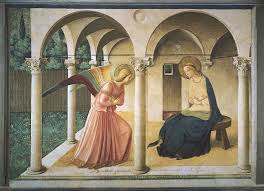Stamp: "Tavrokathapsia" bulls' race, ovptd "ISOLA ITALIANA DI PAXO" (Ionian Islands, Italian Occ. 1943)
"Tavrokathapsia" bulls' race, ovptd "ISOLA ITALIANA DI PAXO" (Ionian Islands, Italian Occ. 1943)
01 January (Ionian Islands, Italian Occ. ) within release Greek history ovptd "ISOLA ITALIANA DI PAXO ANNO XIX°" goes into circulation Stamp "Tavrokathapsia" bulls' race, ovptd "ISOLA ITALIANA DI PAXO" face value 5 Greek lepton
| Stamp "Tavrokathapsia" bulls' race, ovptd "ISOLA ITALIANA DI PAXO" in catalogues | |
|---|---|
| Colnect codes: | Col: IT-PX 1943-01 |
Stamp is horizontal format.
Types of Greece of 1937 overprinted on the front in different colors "ISOLA ITALIANA DI PAXO ANNO XIX°" and on the reverse "THE AXIS VICTORY IS THE VICTORY OF EUROPE" (in Italian or in Greek) always with different colors. It shows the "taurocatapsia" in Minoan Crete, where the athletes will have to make acrobatic leaps over the bull. It was "Tavrokathapsia" dedicated to the God Poseidon.Also in the issue Greek history ovptd "ISOLA ITALIANA DI PAXO ANNO XIX°":
- Stamp - "Tavrokathapsia" bulls' race, ovptd "ISOLA ITALIANA DI PAXO" face value 5;
- Stamp - Coin of Amphiktyony, ovptd "ISOLA ITALIANA DI PAXO" face value 40;
- Stamp - Court Lady of Tiryns, ovptd "ISOLA ITALIANA DI PAXO" face value 10;
- Stamp - Diagoras of Rhodes, ovptd "ISOLA ITALIANA DI PAXO" face value 50;
- Stamp - Zeus of Didoni, ovptd "ISOLA ITALIANA DI PAXO" face value 20;
- Stamp - God Helios, ovptd "ISOLA ITALIANA DI PAXO" face value 1;
- Se-tenant - Queen Olga - Mother Sophia ovptd "ISOLA ITALIANA DI PAXO face value 10;
- Stamp - Queen Olga - Mother Sophia, ovptd "ISOLA ITALIANA DI PAXO" face value 50;
- Stamp - Venus of Melos, ovptd "ISOLA ITALIANA DI PAXO" face value 80;
Stamp "Tavrokathapsia" bulls' race, ovptd "ISOLA ITALIANA DI PAXO" it reflects the thematic directions:
Animals are multicellular, eukaryotic organisms of the kingdom Animalia (also called Metazoa). All animals are motile, meaning they can move spontaneously and independently, at some point in their lives. Their body plan eventually becomes fixed as they develop, although some undergo a process of metamorphosis later on in their lives. All animals are heterotrophs: they must ingest other organisms or their products for sustenance.
Art is a diverse range of human activities in creating visual, auditory or performing artifacts (artworks), expressing the author's imaginative or technical skill, intended to be appreciated for their beauty or emotional power. In their most general form these activities include the production of works of art, the criticism of art, the study of the history of art, and the aesthetic dissemination of art. The oldest documented forms of art are visual arts, which include creation of images or objects in fields including painting, sculpture, printmaking, photography, and other visual media. Architecture is often included as one of the visual arts; however, like the decorative arts, or advertising, it involves the creation of objects where the practical considerations of use are essential—in a way that they usually are not in a painting, for example. Music, theatre, film, dance, and other performing arts, as well as literature and other media such as interactive media, are included in a broader definition of art or the arts. Until the 17th century, art referred to any skill or mastery and was not differentiated from crafts or sciences. In modern usage after the 17th century, where aesthetic considerations are paramount, the fine arts are separated and distinguished from acquired skills in general, such as the decorative or applied arts.
Fresco (pl. frescos or frescoes) is a technique of mural painting executed upon freshly laid ("wet") lime plaster. Water is used as the vehicle for the dry-powder pigment to merge with the plaster, and with the setting of the plaster, the painting becomes an integral part of the wall. The word fresco (Italian: affresco) is derived from the Italian adjective fresco meaning "fresh", and may thus be contrasted with fresco-secco or secco mural painting techniques, which are applied to dried plaster, to supplement painting in fresco. The fresco technique has been employed since antiquity and is closely associated with Italian Renaissance painting.
Mammals are any vertebrates within the class Mammalia (/məˈmeɪli.ə/ from Latin mamma "breast"), a clade of endothermic amniotes distinguished from reptiles (including birds) by the possession of a neocortex (a region of the brain), hair, three middle ear bones and mammary glands. All female mammals nurse their young with milk, secreted from the mammary glands. Mammals include the largest animals on the planet, the great whales. The basic body type is a terrestrial quadruped, but some mammals are adapted for life at sea, in the air, in trees, underground or on two legs. The largest group of mammals, the placentals, have a placenta, which enables the feeding of the fetus during gestation. Mammals range in size from the 30–40 mm (1.2–1.6 in) bumblebee bat to the 30-meter (98 ft) blue whale. With the exception of the five species of monotreme (egg-laying mammals), all modern mammals give birth to live young. Most mammals, including the six most species-rich orders, belong to the placental group. The largest orders are the rodents, bats and Soricomorpha (shrews and allies). The next three biggest orders, depending on the biological classification scheme used, are the Primates (apes and monkeys), the Cetartiodactyla (whales and even-toed ungulates), and the Carnivora (cats, dogs, seals, and allies).
Myth is a genre of folklore consisting primarily of narratives that play a fundamental role in a society. For scholars, this is very different from the vernacular usage of the term "myth" that refers to a belief that is not true. Instead, the veracity of a myth is not a defining criterion





